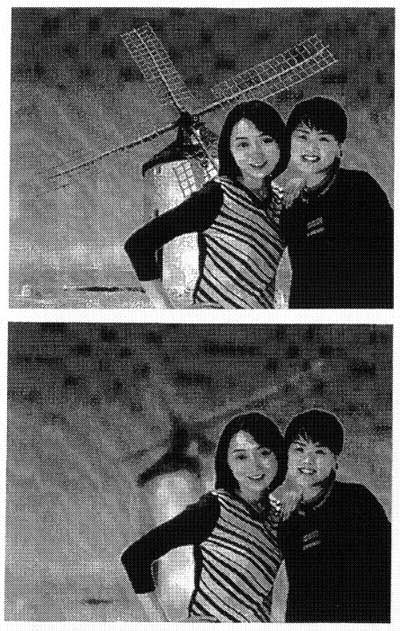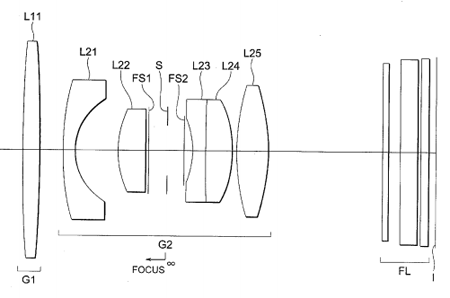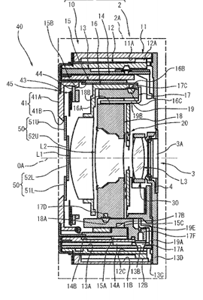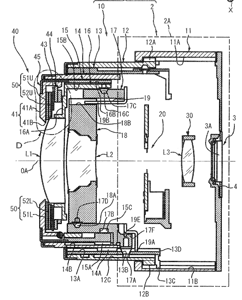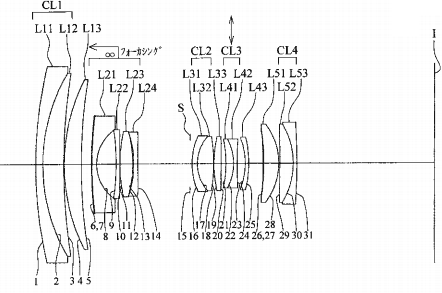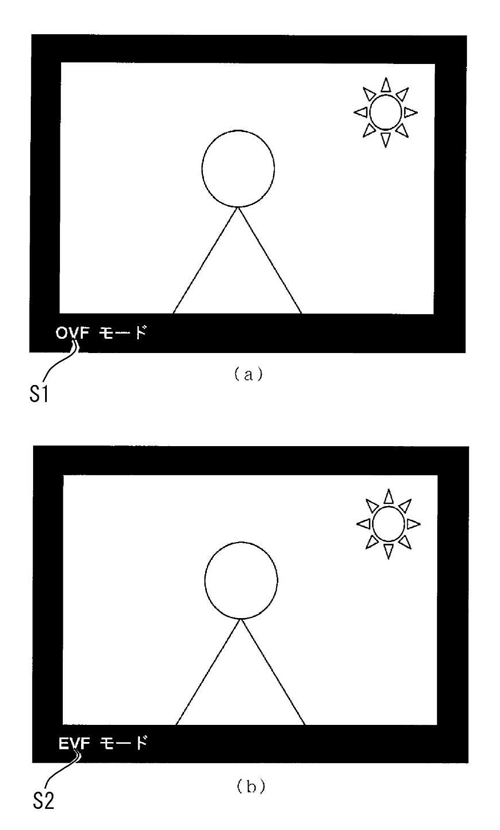Time for another update on the latest patent application filed by Nikon:
Patent application 20110273577 is for artificial blur enhancement – in other words simulating bokeh without using a fast lens:
The blur detecting section detects degree of blur of an image of the second region of the image of the photographic image data. The blur enhancement section performs blur enhancement processing on the image of the second region to enlarge the degree of blur of the image after image processing in proportion to the magnitude of the detected degree of blur of the image.
Patent application 20110267707 is for a 10mm f/2.8 lens (f=10.30, FNO=2.91):
Patent applications 20110267710 and 20110274419 are for a retractable lens:
There is a lens barrel that drives a first lens and a lens barrier independently on an optical axis. This lens barrel alters relative positions of the lens barrier and the first lens between a retracted state and a shooting state. That is, in the retracted state, the first lens is withdrawn toward the image side in the optical axis direction such that the lens barrier can close, and in the shooting state, the first lens is moved closer to the lens barrier such that a larger angle of view may be provided without the overall external diameter of the lens barrel increasing.
In recent years, in order to further widen the angle of a lens, a mechanism has been employed that, in the shooting state, projects a first lens forward in the optical axis direction beyond a position at which the lens barrier is disposed. However, with this mechanism, when the lens barrel is switching to the shooting state, if, for example, the lens barrier is pushed against by an external force and the lens barrier does not open, the first lens (optical system) comes into contact with the lens barrier, and the lens barrier and the first lens may be damaged.
In addition to the one reported back in August, two more patents (2011-221421, 2011-221422) were filed in Japan for a 24-70mm f/3.5-4.5 lens. Several different designs were mentioned in the patents:
| Focal length f | Aperture Fno | Lens design | Aspherical surface | ED glass |
| 24-70mm | F3.5-4.5 | 18 sheets 12 groups | Three on three sides | Zero |
| 24-85mm | F3.5-4.5 | 18 sheets 12 groups | Three on three sides | One |
| 28-105mm | F3.5-4.5 | 18 sheets 12 groups | Three on three sides | One |
| 24-90mm | F3.5-5.6 | 18 sheets in 11 groups | Three on three sides | One |
| 22-80mm | F3.5-5.6 | 18 sheets in 11 groups | Three on three sides | One |
Patent 2011-223469 is for some kind of a hybrid viewfinder that can automatically switch between EVF and OVF based on the photographed scene:
- If the subject is bright: switch to EVF or rear LCD Live View
- If the subject is dark: switch to OVF switch
This invention relates to the imaging device which changes an observation method according to the luminosity of a photographic subject – reducing the light volume which enters into a photography person’s pupil as photographic subject luminosity becomes high so that a light strong against a photography person’s pupil may not enter conventionally (Google translation)
The patent describes also an OVF and EVF indication in the viewfinder:
Nikon has filed several different hybrid viewfinder related patents in the past.
